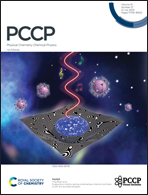Surface-sealing encapsulation of phosphotungstic acid in microporous UiO-66 as a bifunctional catalyst for transfer hydrogenation of levulinic acid to γ-valerolactone†
Abstract
The efficient production of γ-valerolactone (GVL) from renewable lignocellulose that is synthesized in plants by photosynthesis to replace the declining fossil resources conforms to the principles of circular economy. Compared to direct hydrogenation by H2 molecules, catalytic transfer hydrogenation (CTH) of levulinic acid (LA) and/or its esters to GVL with organic alcohols as a hydrogen source is a much milder route. The synergistic catalysis between Lewis and Brønsted acids is indispensable in the CTH process. Considering that unsaturated coordinated Zr species could act as Lewis acid sites and phosphotungstic acid (PTA) could dissociate protons as Brønsted acid sites, UiO-66 (Zr) was thus “acidified” by encapsulating PTA in its channels to tune the ratio of Brønsted to Lewis acid sites as a bifunctional catalyst so as to better understand the catalytic structure–performance relationship in the CTH process. To address the dilemma of encapsulated PTA that is prone to leach, a rapid surface sealing strategy was adopted to establish a polyimide (PI) coating over the surface of UiO-66 introducing a space confinement effect via an anhydride–amine coupling reaction. The as-synthesized PTA/UiO-66@PI catalyst exhibited 100% of LA conversion, a 93.2% of GVL yield and high recyclability for at least five consecutive cycles. Moreover, a reaction pathway followed by esterification, hydrogenation and dealcoholization as well as a catalytic hydrogenation mechanism based on intermolecular hydride β-H transfer were proposed. Current work not only provides a high-performance and high-stability catalytic system to selectively produce GVL from LA or its esters, but also sheds light on the catalytic mechanism of the CTH process at the molecular level.



 Please wait while we load your content...
Please wait while we load your content...